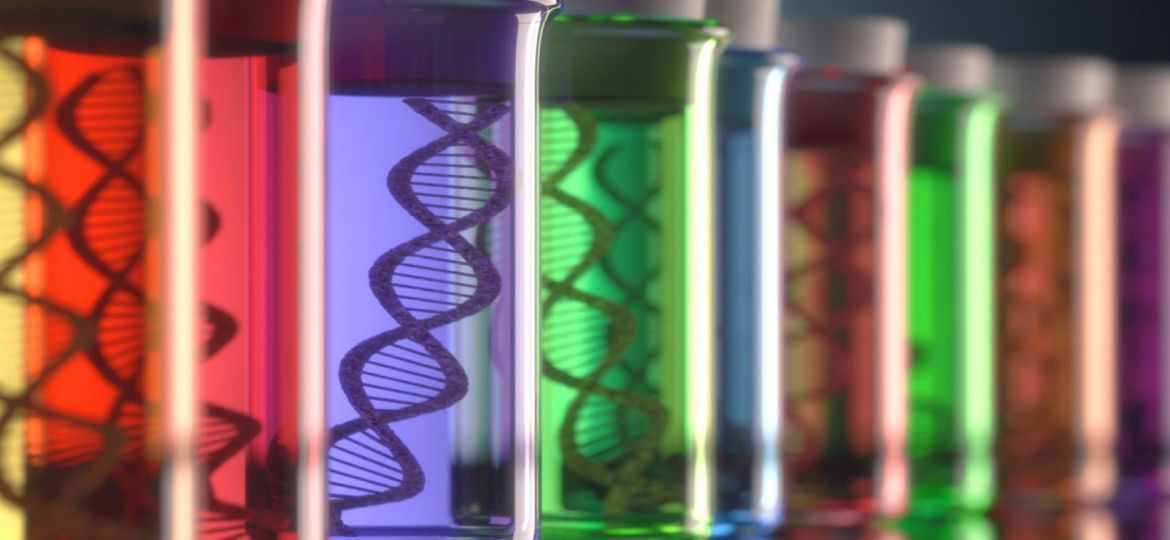
WHY THIS MATTERS IN BRIEF
The world’s first DNA computer just broke cover, and it could revolutionise healthcare by detecting disease the instant it appears and helping turn bacteria into complex, disease fighting drugs factories.
In the past we were told that we were made up of DNA, but now we’re told that DNA is “just software” that, like conventional computer programs can be coded, hacked and tweaked to all manner of ends. So now we’re told we’re made of software instead, and over the past year I’ve been seeing several new research trends, ones where we don’t just use synthetic biology to create new lifeforms, and tweak existing ones, but where we turn the biological organism, including ourselves, into computers.
Take for example the new chemical computer breakthrough from Stanford University which could one day turn humans into a biological computer, or the incessant drive to create the world’s first DNA computers – and are we, or are we not DNA?
In many respects you could argue that this new view of the world – a coders view – is the right one. After all, from the colour of your hair, to your gender and height DNA is the code that, well, makes you you, and now a team of scientists from Eindhoven University have gone one step further and, according to their paper, which was published last week in the journal Nature Communications, they’ve found a way to use DNA to detect antibodies, the soldiers in your blood stream that your body uses to fight infection, as they form. In short, they’ve created the world’s first DNA computer, and they’re using it to uncover the first signs of infection so they can kill infections faster.
The teams new DNA computer works like a regular computer, by running a short sequence of molecular instructions that helps it detect the presence of anti-bodies in the blood, and one day, perhaps sooner rather than later, the team think it will be possible to get that same DNA computer to not just identify the presence of disease, but also release the drugs to counter it.
Taking a leap though, and this is me talking, not the researchers, it might even be possible one day to combine advanced gene editing techniques, such as CRISPR, and a recently announced “Cyborg bacteria” breakthrough to let the new DNA computer genetically alter the microbiome bacteria within our bodies to turn them into drugs factories that manufacture the drugs in vitro to kill the new found infection. But hey that’s sci-fi and if you visit this site regularly you know that sci-fi never comes true… well, except for this tractor beam, these AI’s that are making more AI’s and several hundred other breakthroughs, but asides from that sci-fi’s just for Hollywood.
Anyway, back to the science. The key to making the new DNA computer work is that DNA strands really like to stick to each other – in very specific ways.
“In a test tube, you mix a bunch of DNA molecules and by choosing the right sequences, they undergo a series of reactions,” says Maarten Merkx, a biochemist at Eindhoven University and a lead author on the new paper, “a single strand from one double helix molecule attaches to a strand from a different DNA molecule, in a process called ‘hybridization’ and that creates a new DNA molecule, which in turn combines with yet more DNA in the mix and so on.”
The key to the latest breakthrough is that certain combinations of DNA molecules only occur in the presence of specific anti-bodies, and if you add together the right molecules, then you can get a signal out of the system.
When a particular hybridization happens, it’s this signal – which is the DNA equivalent of what happens in your computer – where hybridization is the “Yes” or the “1” and a lack of hybridization is a “No” or the “0” that indicates the presence of a specific anti-body. In the teams case they tweaked their DNA computer so it would fluoresce – and that was the signal that let them identify that a specific anti-body was present.
Today we all know you can run a blood test to identify specific anti-bodies but that’s the old fashioned way. The team’s idea here is that one day we could use their new DNA computer as a persistent monitor for anti-bodies, and one day use it to create DNA nanocapsules that transport and release drugs to kill the infection in question.
“The DNA that our DNA computer produces can be used to unlock this capsule,” says Merkx. His team was looking specifically at viruses like influenza and HIV, so maybe the package could deliver more virus killing anti-bodies.
The study also represents a leap in how DNA computing works in general.
“It certainly offers another tool in the toolbox of those who want to design complex computing strategies,” says Philip Santangelo, a bioengineer at Georgia Tech who wasn’t involved in the research, “you could use proteins and enzymes to build computing architectures that use many biomolecules, not just DNA.”
More complexity means more precision and sophistication in the kinds of programs scientists can run, but for now just sit back and think what it will be like when your own, new Human operating system crashes and blue screens. Fun times, fun times indeed.
















